Points to note when observing obliquely using a microscope
996 Views |

Microscope Oblique Observation Options
Microscopes are basically designed to observe workpieces directly below, but by equipping them with options such as a 3D arm or universal stand, observations can be made from an oblique or sideways angle.
Observation from an oblique angle makes it possible to observe objects that are tilted or that cannot be observed from directly above.
When using 3D arm
When using the universal stand
When is it necessary to observe from an angle?
There are two main cases when it is necessary to observe from an angle.
Pattern 1: When the observation point of the workpiece is originally at an angle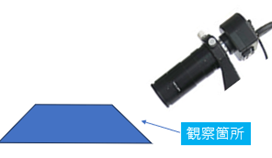
Pattern 2: When the observation area cannot be observed from above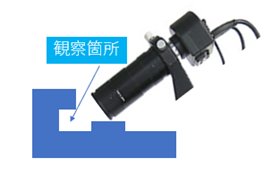
In the case of pattern 1, there are no problems as long as the observation surface and the microscope are parallel.
However, in the case of pattern 2, there are a few points to keep in mind.
Points to note when observing at an angle
1. Some areas are out of focus
2. Measurement errors occur
3. Observation with coaxial lighting
4. Focus synthesis does not work well
1. There are some areas that are out of focus
Microscopes have a fixed distance (working distance, WD) at which they can focus. For example, when observing a flat surface at an angle, the distance changes depending on the location, so if you focus on the center as shown below, the surrounding areas will not be in focus.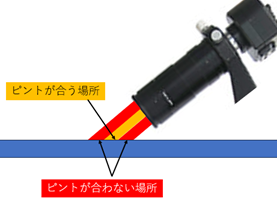
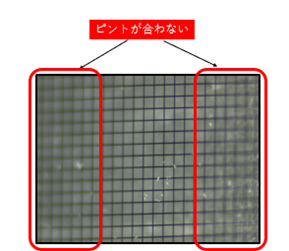
2. Measurement errors occur
If you calibrate the microscope, it is possible to measure. However, because it is at an angle,
the actual length will differ from the measured value.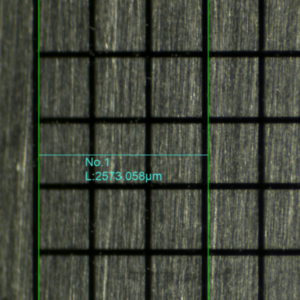
I measured three squares of a 1000um grid (3000μm) and the measurement result was 2500μm.
3. Observation with coaxial lighting
Coaxial lighting is suitable for observing flat reflective objects such as plated surfaces. The light irradiated from the coaxial lighting to the workpiece is specularly reflected back and captured by the camera sensor, and the image is displayed.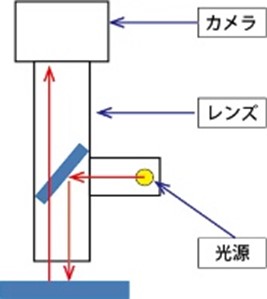
How a coaxial illumination microscope works
Observing metal surfaces using coaxial illumination
If you observe from an angle, the light will not return to the camera, so you will not be able to obtain the same image as if you were observing with coaxial lighting.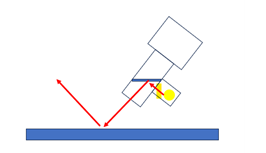
Oblique image of a coaxial illumination microscope
Observing metal surfaces using coaxial lighting at an angle (almost nothing can be seen)
4. Focus synthesis does not work well
By using the high-performance image processing measurement software MFShip, you can obtain an image that is in focus overall by changing the height of the microscope and adjusting the focus. This function is possible because only the distance of the microscope to the workpiece changes.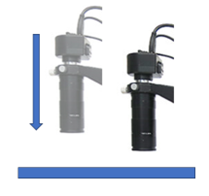
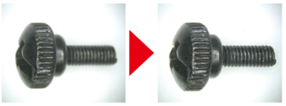
However, when observing from an oblique angle, not only the height adjustment but also the field of view changes, so the composition function does not work well.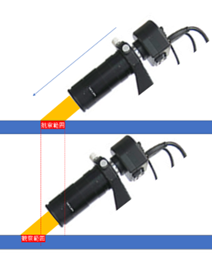
Summary
By using a 3D arm or universal stand, it is possible to observe at an angle with a microscope.
However, there are some precautions to take when observing at an angle, so please take these into consideration when using the microscope.
Inquire about this product
Tel: 02-664-2246
Mail:info@shodensha.co.th
Business hours 8.30 - 17.30 (Closed on weekends & public holidays)

